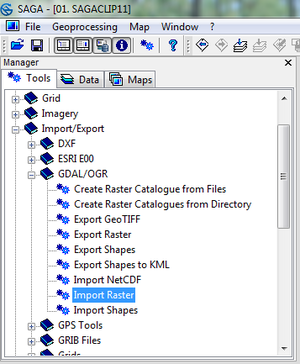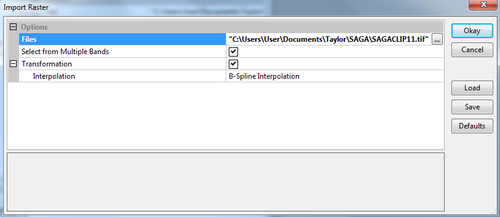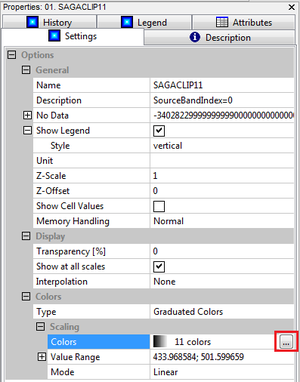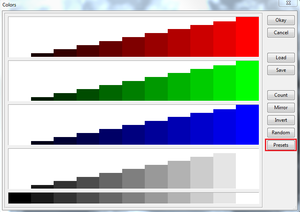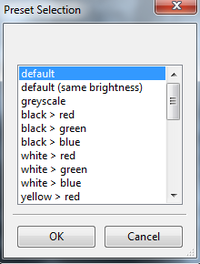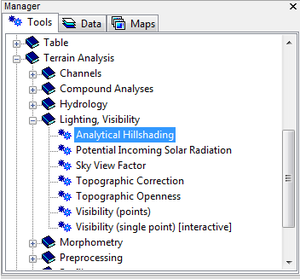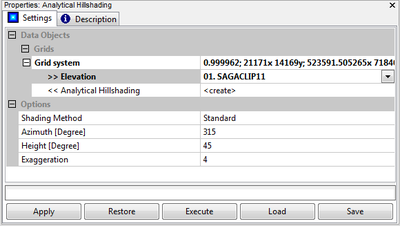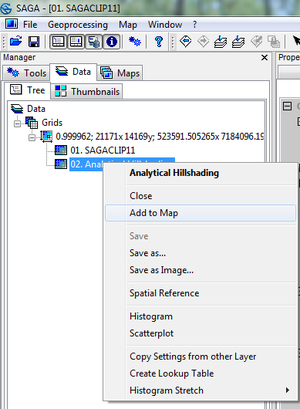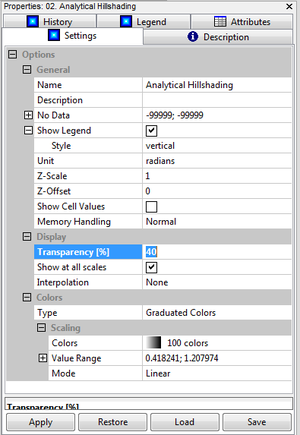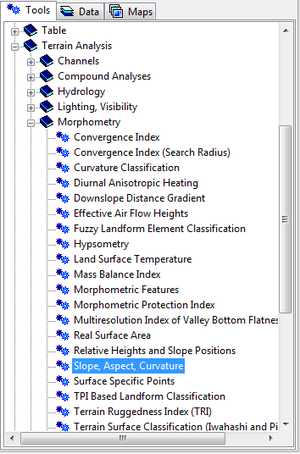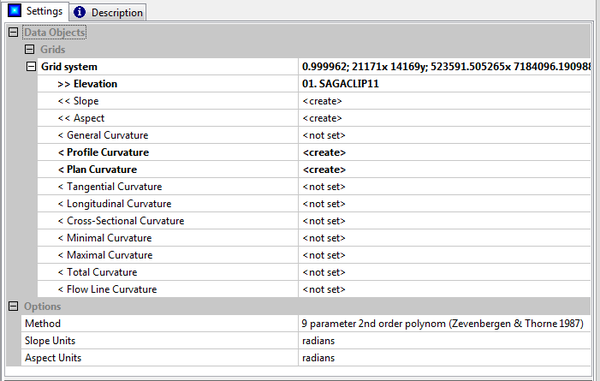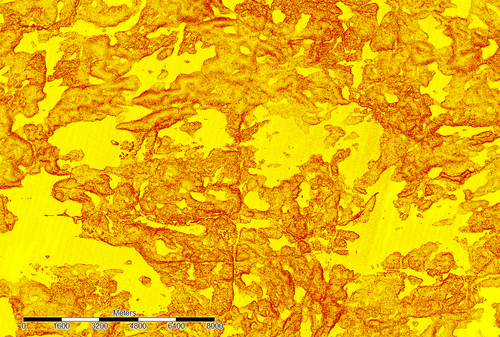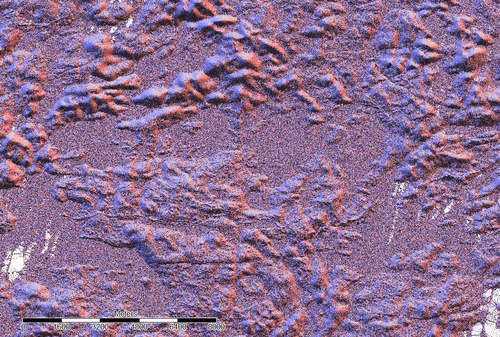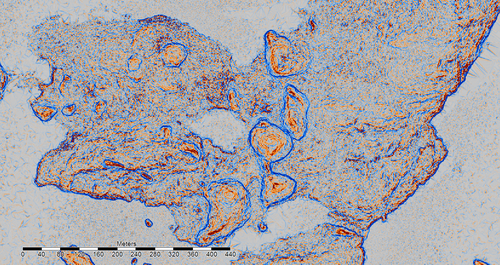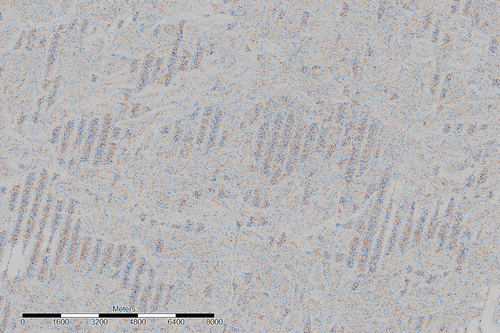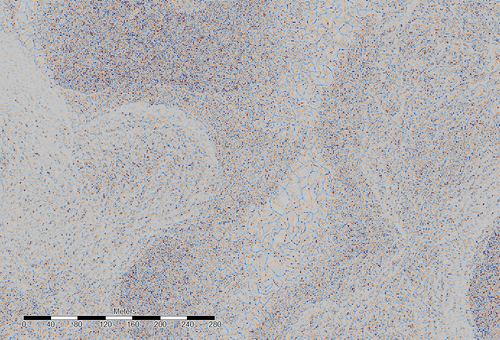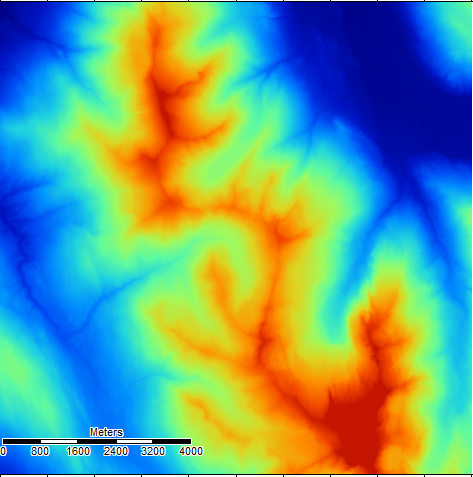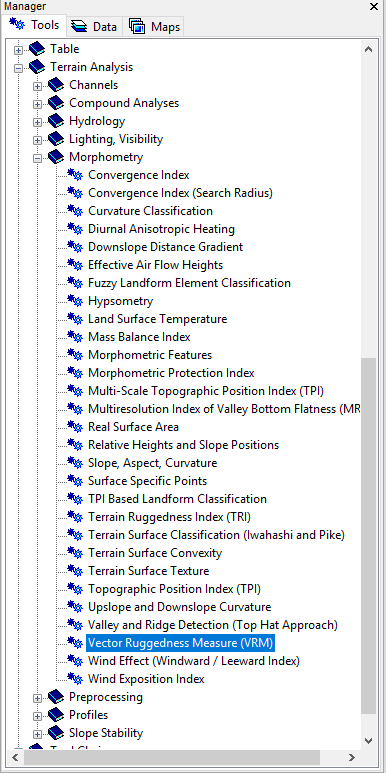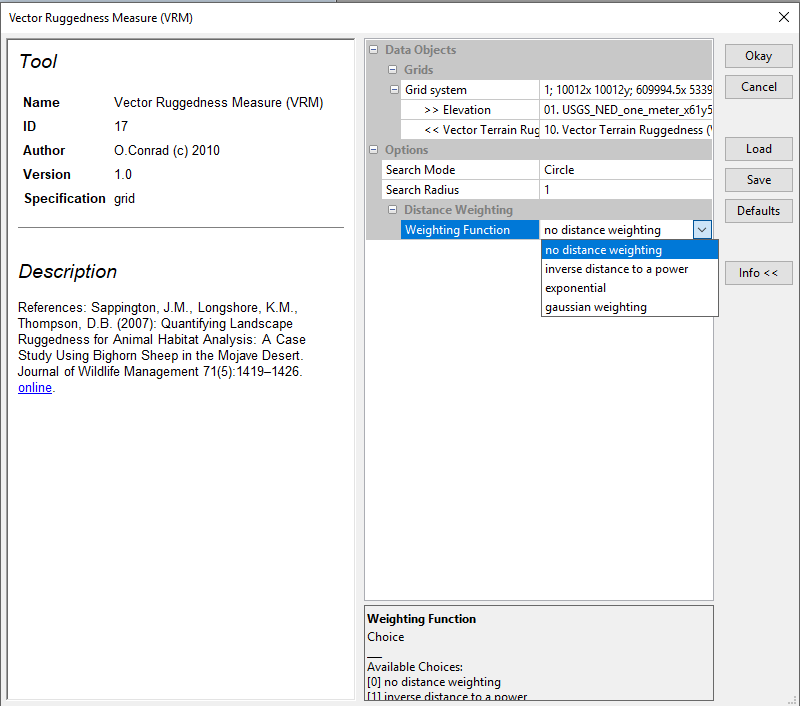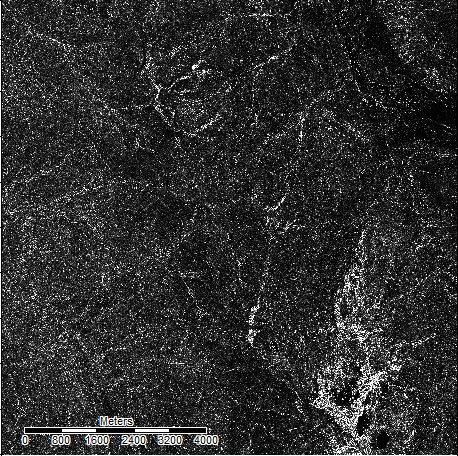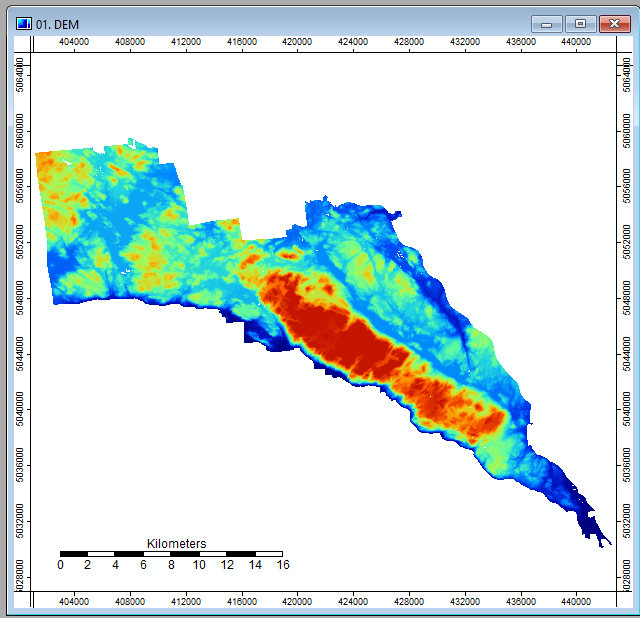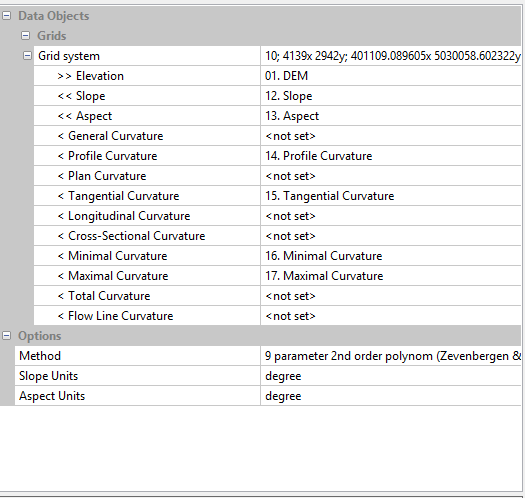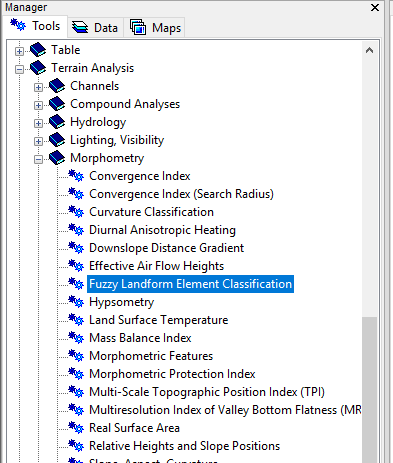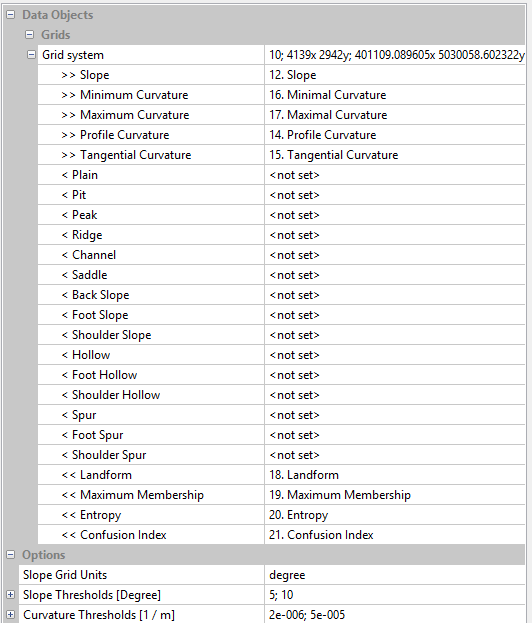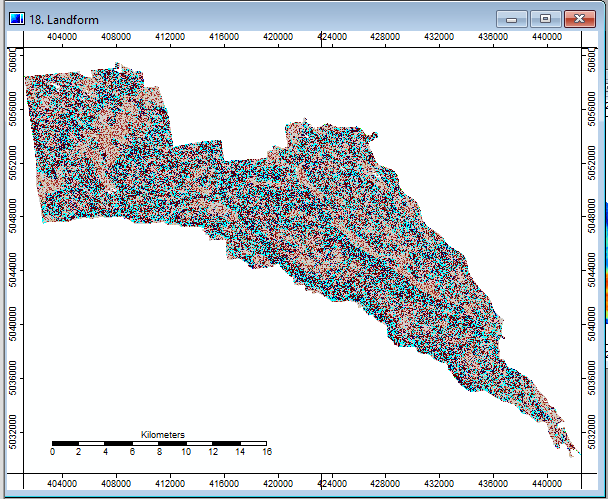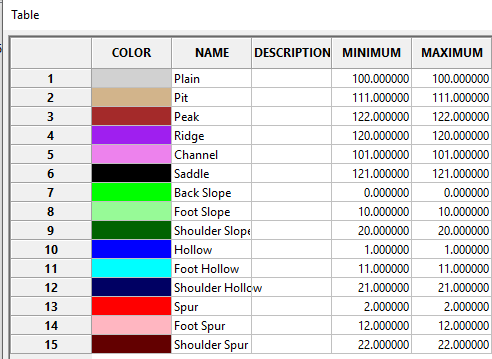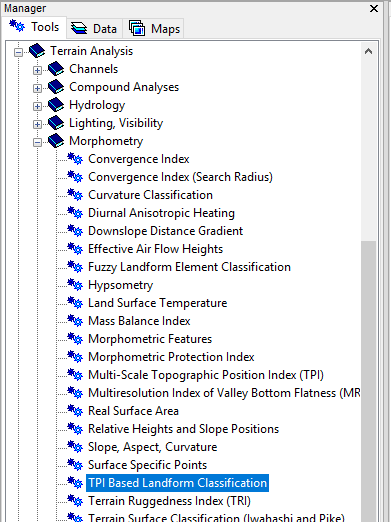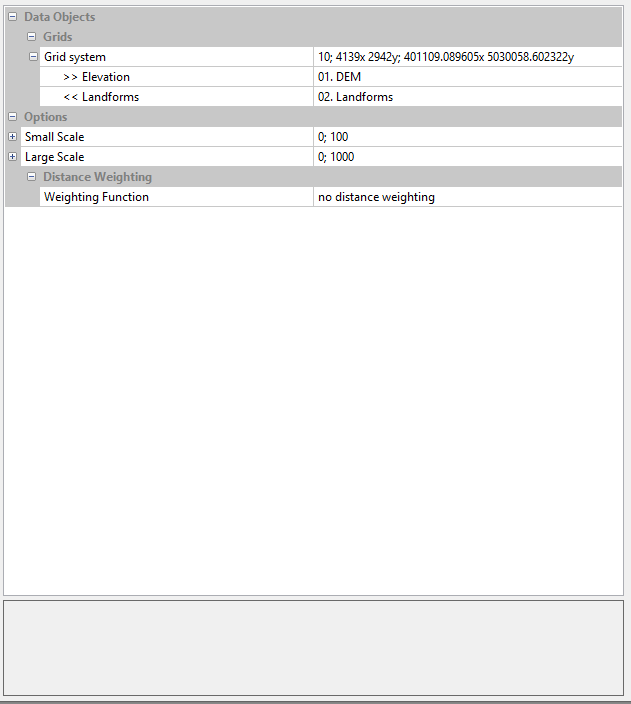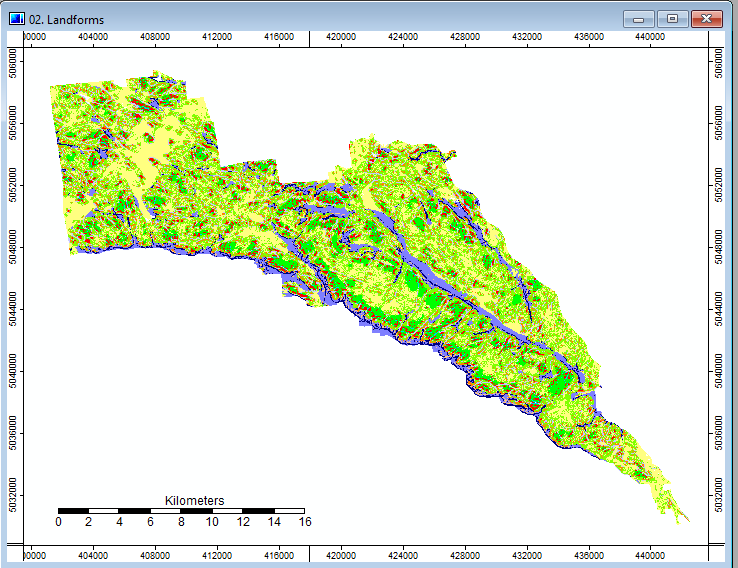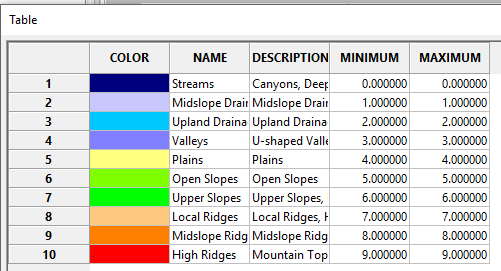Exploring a subset of SAGA's Terrain Analysis tools
Purpose and Introduction
The purpose of this tutorial is to introduce the reader to a subset of the raster terrain analysis tools featured in SAGA GIS,. Importing and Visualizing data will be discussed, and instruction will be provided regarding the functions of several of SAGA's Morphometry Terrain Analysis tools.
This tutorial will cover the use of basic digital elevation map analyis procedures such as finding the slope and aspect of a surface, to more advanced operations such as analytical hillshading, plan curvature, vector terrain ruggedness, to the automatic classification of landforms and landform elements.
Software
SAGA is a free and open source program which can be downloaded here: http://www.saga-gis.org/en/index.html
It runs on Windows or Linux operating systems, as well as on virtual machines
Data
The data used in this tutorial is 1 m elevation data, though any digital elevation model (DEM) will work in this tutorial. Similar data can be found online on sites such as GeoGratis (http://geogratis.gc.ca/geogratis/en/search), and will be free and easily downloadable.
Tutorial
Importing data
To import your data into SAGA you must enter the Tools section and select GDAL/OGR > Import Raster
Choose your file, and select Okay
Data visualization
Right click on the data you have just imported and click "Add to Map", the data will now appear in SAGA's view window.
To better visualize the change in slope, change the colour symbol by clicking the colour scaling option:
Next click on the Presets button:
Here select the default option:
There are a wide variety of colour scale options here, feel free to explore your options.
Finally select "Apply" and "Save"
Analytical Hillshading
You will find the Analytical Hillshading tool under Terrain Analysis: Lighting, Visibility
Within the tool window, specify the current grid system, as well as the elevation layer with the first imported data, and click execute:
The output file will now appear in the Data tab under Tree. Right click the layer and select "Add to Map":
Next change the transparency to 40% so that both layers are visible and click Apply:
The resulting image should look like this:
Basic Terrain Analysis
Within the toolbox, under Terrain Analysis: Morphometry, you will find the Slope, Aspect, Curvature function.
This is a batch process and it will produce 15 new fields at once. As seen below, enter the current grid system into the first field, the elevation data into the second field, check create for the fields you are interested in and leave the remaining fields set to <notset>:
A subset of the results from this function are as follows:
Slope:
Aspect:
Profile Curvature:
Zoomed in profile curvature:
Plan Curvature
The plan view curvature function found within the SAGA toolset is important for work in understanding variations in man-made and naturally occurring terrain. This tool can be used in fields such as road safety and maintenance, coastline monitoring, tracking mass wasting events, etc.
Plan curvature by definition is the curvature in a horizontal plane. Positive curvature values indicate a convex contour within a cell, and negative curvature values indicate a concave contour within the cell, with respect to surrounding cells (http://www.et-st.com/et_surface/userguide/Raster/ETG_RasterCurvature.htm).
The resulting image for Plan Curvature is as follows:
Zoomed in plan curvature:
Vector Terrain Ruggedness
For the following instructions, a digital elevation file of northern Oregon was used.
Vector terrain ruggedness is a measure of the ruggedness of terrain, calculated by measuring the dispersion of slope vectors orthogonal to grid cells within a neighbourhood. In effect, this is a measurement of the combined variability in both slope and aspect. Ruggedness ranges between calculated values of 0, representing no terrain variation, to 1, representing complete terrain variation. Vector Terrain Ruggedness is primarily used in the study of animal habitat models [1]
in SAGA GIS, Vector terrain ruggedness is calculated using the Vector Ruggedness Measure tool. It can be found under Terrain Analysis: Morphometry.
Within the tool window, specify the current grid system and the elevation map to be used for analysis.
The resulting ruggedness measurement image is as follows.
As expected, the ruggedness is highest in areas with high variability in slope and aspect.
Fuzzy Landform Element Classification
For the following instructions, a digital elevation file of Gatineau Park was used.
The Fuzzy Landform Element Classification tool uses fuzzy logic to approximate landform elements in an area. it is an unsupervised classification method that requires very little computing time compared to methods such as TPI Based Landform Classification. The analysis of landform elements is an important part of the field of geomorphometry [2]
To begin, use the Slope, Aspect Curvature tool to create slope, maximum curvature, minimum curvature, profile curvature and tangential curvature rasters from your DEM. Make sure the Slope Units field and the Aspect Units field are set to Degree.
To begin the classification, select the Fuzzy Landform Element Classification tool from Terrain Analysis: Morphometry
Then, enter the rasters that you created in the previous steps into their appropriate fields, as shown.
The raster labeled "Landform" contains the now-classified landform elements. the classified landform raster should look like this:
A legend with labels is automatically generated for the raster. it is shown below:
TPI Based Landform Classification
For the following instructions, a digital elevation file of Gatineau Park was used.
Topopgraphic position index, or TPI,is an algorithm for determining an object or point's relative topographic position to a landform. TPI works by comparing the value of each cell in a DEM with the mean value of it's neighbourhood. positive values indicate areas of relatively high elevation, like ridges. negative values indicate areas of relative lows, like valleys. values close to zero indicate areas of constant slope. TPI depends heavily on the scale of the analysis, with smaller scales providing significantly less detail. combining both small and large scale TPI allows for the classification and interpretation of many landforms. [3]
In SAGA GIS, the TPI interpretation of landforms is accomplished with the TPI Based Landform Classification Tool, found under Terrain Analysis:Morphometry
The TPI Based Landform Classification Tool only requires a DEM to function. Depending on available processing power and the resolution of your DEM, geoprocessing can take a long time. Enter the DEM into the Grid System and Elevation fields in the appropriate fields, as shown below:
Once geoprocessing is complete, the output should resemble the image below
A labeled classification scheme for the created raster is automatically generated. It can be seen below
Results
The result of the Plan Curvature function in SAGA is a DEM with a new colour scale isolating the new data. In the plan curvature output blues represent a negative value (concave curvature), and red indicates a positive curvature (convex contour). The striated sections seen above in the output are over water and therefore have no definitive curvature, and are smooth in comparison. These areas could be removed to help the overall effectiveness of the map.
This tool is useful in watershed mapping as well and the small scale variation in curvature seen in the zoomed-in output above shows curvature variation in a low lying area. This information could be used to better understand the watershed and its extent.
Reference
Hengl, T., & Reuter, H. I. (2013). Geomorphometry: concepts, software, applications. Retrieved from https://books.google.ca/books?id=u33ArNw4BacC&lpg=PA227&ots=h9MkkvRK_B&dq=geomorphometry%20landform%20elements&pg=PA227#v=onepage&q&f=false
SAGA software: http://www.saga-gis.org/en/index.html
Sappington, J.M., K.M. Longshore, and D.B. Thomson. 2007. Quantifiying Landscape Ruggedness for Animal Habitat Anaysis: A case Study Using Bighorn Sheep in the Mojave Desert. Journal of Wildlife Management. 71(5): 1419 -1429 [4]
GeoGratis: http://geogratis.gc.ca/geogratis/en/search
http://www.et-st.com/et_surface/userguide/Raster/ETG_RasterCurvature.htm
Weiss, A.D. (2000): Topographic Position and Landforms Analysis. poster. [5]
